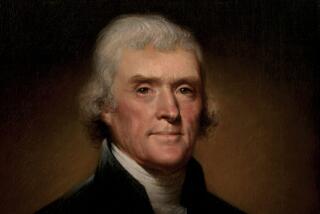Retirement Savings Idea at Rare Point: Agreement
WASHINGTON — Buried underneath the ferociously partisan debate over Social Security is a surprising piece of political unity: Leaders of both parties want to use part of the budget surplus to create a new retirement investment account for workers.
Armed with cash from Uncle Sam--perhaps in the range of several hundred dollars in the first year under President Clinton’s plan--more than 140 million U.S. workers would have instant access to the booming stock market. Millions of people of modest incomes, who find it virtually impossible to save on their own, would be given extra cash that they would be required to invest for their retirement.
Their success or failure in the market could help determine whether Social Security survives, or is crushed as the baby boom generation retires.
The accounts appeal to both sides for different reasons. Clinton sees them as a way to get more money for retirement into the hands of working people, without putting any of the current Social Security system at risk on Wall Street. And Republicans want a tryout of the new accounts to show that the stock market offers better opportunities than conventional Social Security.
Clinton, who calls his version “universal savings accounts,” would reserve 12% of the projected budget surplus, or $536 billion over 15 years, for the accounts.
Every worker would get a base amount, perhaps $150 or $200 a year. Additional amounts up to an established ceiling would be available on a matching basis for those who contribute their own funds, with larger government matches for those with low incomes.
Workers earning $45,000, for example, might get an additional 50 cents from the government for every dollar of their own money they kick in, while the government might offer a dollar-for-dollar match for those making $25,000 a year. Although the precise formula and ceilings on matching funds have not been determined, a White House official said that the goal is to promote savings among workers least able to afford it.
Two leading Republicans, Senate Finance Committee Chairman William V. Roth Jr. of Delaware and House Budget Committee Chairman John R. Kasich of Ohio, have different approaches, but they agree on the need to give every worker some money to open stock accounts for retirement.
“Frankly, I was very pleased to see the president in effect endorse what I have been proposing for some time,” Roth said. “We certainly are thinking along the same lines. We have a real chance of reaching a consensus.”
Roth’s plan, also still on the drawing board, would give every worker a base payment of $250, plus additional funds in proportion to payroll tax payments.
Kasich, who is exploring a presidential bid in 2000, said: “The reason I know my plan is a good one is that the president is trying to take it.”
Kasich and many other Republicans would like to carve out a share of each worker’s payroll tax (12.4%, split between employer and employee) for workers to invest in retirement accounts.
“What I really favor,” he said, “is being able to divert 2% or 3% of payroll taxes to a private account,” although he admitted that is not likely to win acceptance from the Democrats any time soon.
That is because Clinton and congressional Democrats insist that the stock market is too risky for the nation’s core retirement system. Instead, the president would leave Social Security intact and add the USA accounts on top of it.
“He wants to show the Republicans he is open to individual accounts,” said Rep. Robert T. Matsui (D-Sacramento), a member of the House Ways and Means Committee. “This is the first step toward common ground.”
At least some Republicans may be prepared to walk onto that ground. By offering his plan, Clinton has “breached the wall against returning some of the surplus to individuals,” said Rep. Jim McCrery of Louisiana. “[This] allows us to build on some of the good things the president did.”
Clinton’s universal savings accounts would be fed by a tax credit. Workers who qualify for the USA grants bigger than their income tax liabilities would pay no taxes and get a check for the difference. Unlike an ordinary tax credit, however, this one would be reserved strictly for retirement accounts.
The initial accounts would be small as investment funds go, and the administrative costs involved in investing them would consume substantial parts of them. So administration officials said the money initially might be pooled into three investment funds--one for stocks, one for corporate bonds and one for Treasury securities--and workers could apportion their own shares among the three.
When workers’ accounts reached a certain level, they could be withdrawn from the pool and invested as individuals see fit.
The kind of account envisioned by the president “would be a totally new opportunity for the vast majority of the work force,” said Dallas Salisbury, president of the Employee Benefit Research Institute. “It suddenly provides a cash savings opportunity for every working American on an extraordinarily simple basis.”
Of the nation’s 140 million workers, only 40 million to 50 million have tax-deferred savings in individual retirement accounts and salary set-aside programs such as 401(k) accounts.
In a society bombarded with temptations to spend, the new USA accounts “can make savings chic,” said Brookings Institution economist Henry Aaron.
More to Read
Inside the business of entertainment
The Wide Shot brings you news, analysis and insights on everything from streaming wars to production — and what it all means for the future.
You may occasionally receive promotional content from the Los Angeles Times.










